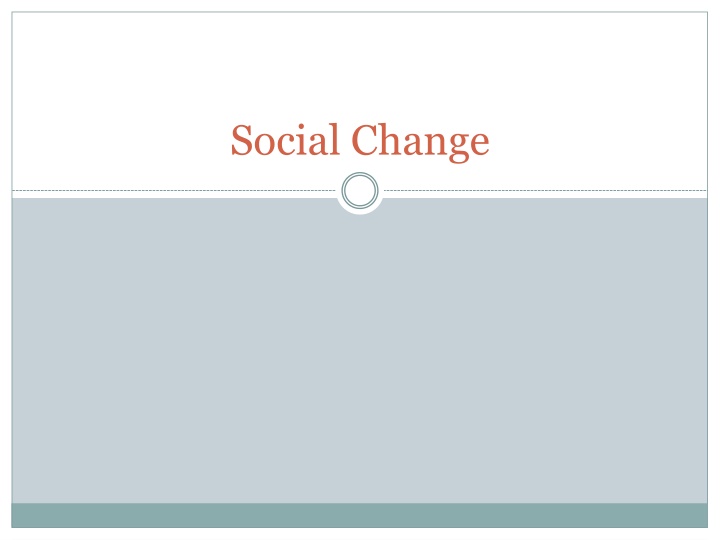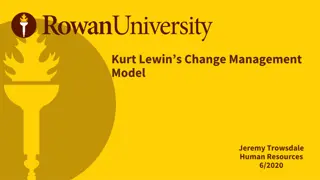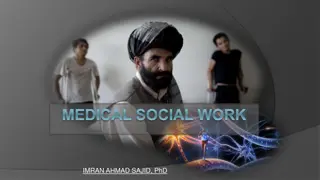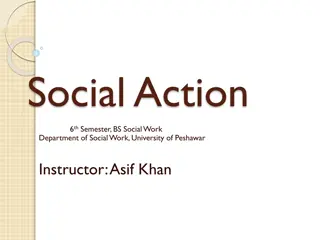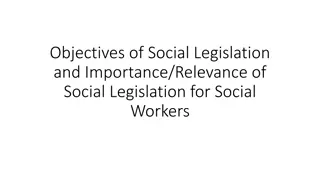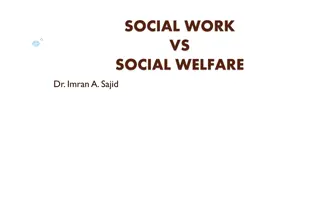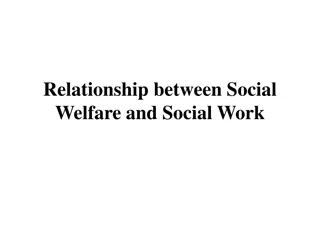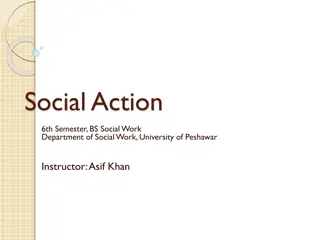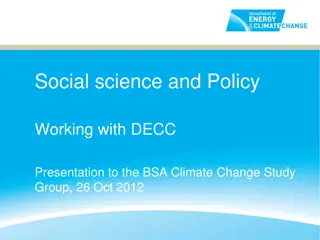Social Change
Social change reflects observable differences in social phenomena over time. It encompasses variations in social processes, patterns, interactions, and organizations. Factors such as environmental, demographic, technological, economic, political, and educational aspects influence social change. Various theories, including evolutionary, cyclic, and conflict theories, offer perspectives on societal development and transformation.
Download Presentation

Please find below an Image/Link to download the presentation.
The content on the website is provided AS IS for your information and personal use only. It may not be sold, licensed, or shared on other websites without obtaining consent from the author.If you encounter any issues during the download, it is possible that the publisher has removed the file from their server.
You are allowed to download the files provided on this website for personal or commercial use, subject to the condition that they are used lawfully. All files are the property of their respective owners.
The content on the website is provided AS IS for your information and personal use only. It may not be sold, licensed, or shared on other websites without obtaining consent from the author.
E N D
Presentation Transcript
Social Change Change means difference in anything observed over a some period of time Social Change means observable differences in any social phenomena over any period of time According to Jone Social Change is a term used to describe variations in, or modifications of any aspect of social processes, social patterns, social interaction or social organization
Social Change may be defined as a new fashion or mode, either modifying or replacing the old, in the life of people, or in the operation of a society (Muzumdar) Social Change is meant only such alterations as occur in social organization, that is social structure and function of society (Davis)
Nature of social Change Social Change is a universal phenomenon Social change is community change not an individual change Speed of social change is not uniform Social Change results from the interaction of may factors
Factors of Social Change The Environmental Factors: Eg. Deforestation Population or Demographic Factors Technological Factors Economic factors Political Factors Educational factors
Theories of Social Change Theory of Deterioration : Perfect state of happiness to unhappiness(Satyug-Tretayug-dvaparyug-Kalyug) Cyclic Theory : Every society has birth, growth, maturity and decline Evolutionary Theory : society moves in specific directions. Therefore, society as progressing to higher and higher levels. As a result, they concluded that their own cultural attitudes and behaviours were more advanced than those of earlier societies.
Functionalist Theory : Functionalist sociologists emphasize what maintains society, not what changes it society in its natural state as being stable and balanced That is, society naturally moves toward a state of homeostasis Conflict Theory : Marx noted that history proceeds in stages in which the rich always exploit the poor and weak as a class of people
Cultural Lag Term Came in to exist with invention of technology William F. Ogburn coined this term Various parts of modern culture is not changing at the same rate; some parts are changing more rapidly than others Ogburn Distinguishes between Material and Non- Material culture Material Culture: Tools, machines, dwellings, technology, transportation, etc Non-Material Culture: Family, Education, religion, government, etc
According to Ogburn, non material culture is always slow to respond to the rapid inventions in material culture Non material culture falls behind the material culture and at the end there is a lag between the two This lag between material and non material culture is called as Cultural Lag Eg. New technology in Land but old land holding pattern
